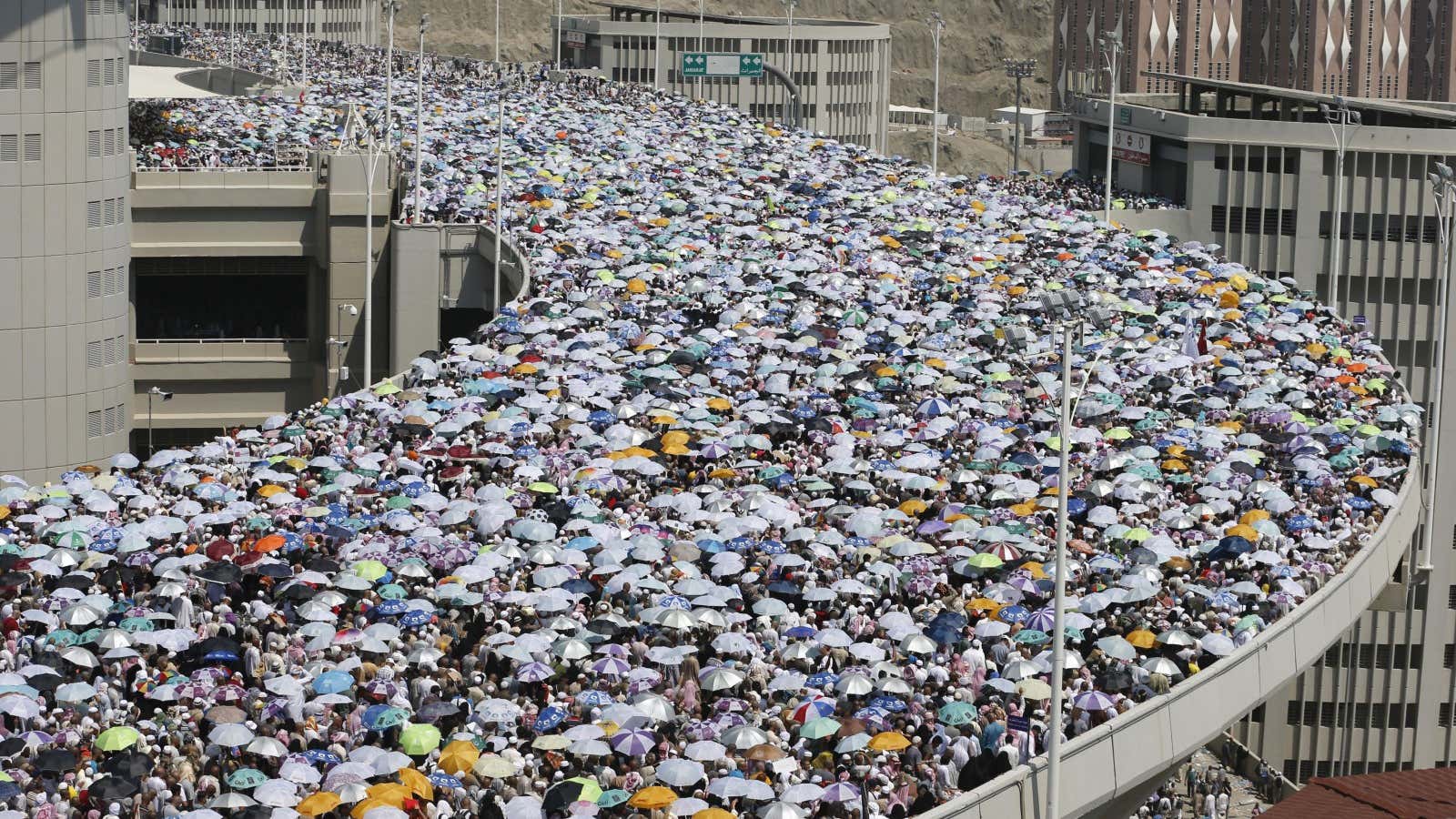For pilgrims heading to Mecca on the hajj, a spiritual journey that involves extensive outdoor walking and prayer, the end of this century could present some problems. Temperatures in the area around the Gulf—including around the Red Sea where Mecca is located—are set to rise to levels that would threaten human life.
In the current climate, the combined temperature and humidity level rarely exceeds 31ºC (88ºF). Except, that is, for in the Gulf, where a combination of low elevation and proximity to the sea leads to particularly high temperatures. The killer level, however, is 35ºC—and they’re approaching that extremity.
Researchers from Loyola Marymount University in California and MIT in Massachusetts modeled two future weather scenarios (pdf), and found that in a scenario where the world continues producing greenhouse gases in a “business-as-usual” way, most regions adjacent to the Gulf, Red Sea, and Arabian Sea would exceed 31ºC and some would reach 35ºC in the period between 2071 and 2100.
Conditions around Mecca will actually be “milder” than some, only hitting 33ºC—but still seriously problematic.
“These extreme conditions are of severe consequence to the Muslim rituals of hajj, when Muslim pilgrims… pray outdoors from dawn to dusk near Mecca,” the researchers wrote. The ritual is likely to become “hazardous to human health, especially for elderly pilgrims,” when the pilgrimage falls in the summer months, they said.
